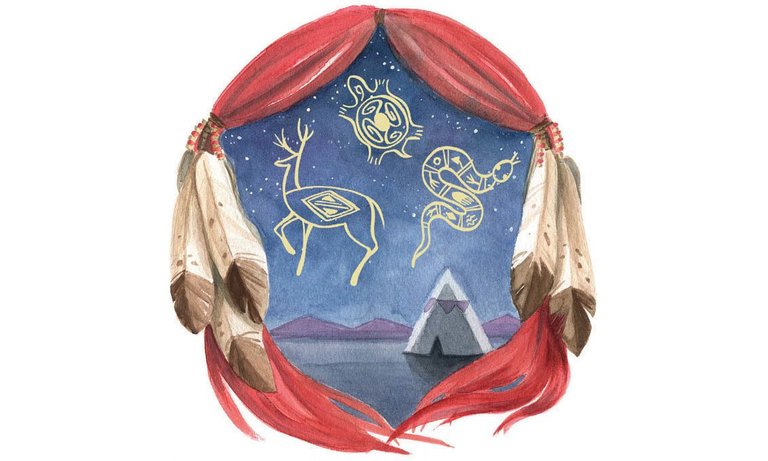Much of modern astronomical lore is based on ancient Greek and Roman mythology, and many star names come from Arabic. We have become so accustomed to these cultural perspectives that different views often don’t enter into our imaginations. But other peoples also looked up at night and wondered.

Consider the Lakota, who lived in the Great Plains of what is now the north-central U.S. For the Lakota, the circle was sacred. They drew the four winds, the four seasons, and the four cardinal directions as a cross within a circle. It thus makes sense that they would look to the sky to seek a circle. Around midnight on the winter solstice, Ki Inyanka Ochanku, the Great Sacred Circle, is visible in the southern sky extending up to the zenith. It’s drawn from Capella, clockwise through the Pleiades, then to Rigel, Sirius, Procyon, Castor, and Pollux. Orion is within the circle, but it’s only part of a much larger animal, perhaps a bird, which extends lengthwise from the Pleiades to Sirius and extends side to side from Betelgeuse to Rigel.
In Lakota lore, Polaris (Wichapi Owanjila) has great importance because it appears to remain stationary. The Lakota considered the circle to be sacred, so this implied that Wichapi Owanjila was superior to the other stars that circle around it. The planets also disregarded the predictable motion of the stars. This made them “Contraries.” To the Lakota, animals, people, and other living things that defied conformity were thought to have special power.
These nomadic people saw constellations that were quite different from those familiar to Northern Hemisphere stargazers today. For example, they saw a snake (Zuzuecha) slithering along from Puppis through the hindquarters of Canis Major to Columba. They called the Hyades cluster Hehaka, the Elk, because they saw the head and antlers of an elk. They saw Leo’s head as a dome-shaped oven or fire pit. Gemini was not a constellation of twins, but Mato-tipila, the lodge of a Great Bear. They recognized the Pleiades as the Wincinchala Sakowin, the Seven Little Girls. Chanshasha Ipusye, the Dried Willow, is seen in the stars of Triangulum and includes Alpha and Beta Arietis. The Great Square of Pegasus is Keya the Turtle.
The Lakota understood the Milky Way to be “the Spirit’s Road” on which the souls of the dead traveled to the afterlife. Where the Spirit’s Road splits, a spirit directs the souls of the good and the evil. Evil souls follow the path that ends in eternal peril at the end of the “short, narrow path,” possibly in the area of Sagittarius or Scorpius. Virtuous souls follow the wider path, which continues unending to paradise.